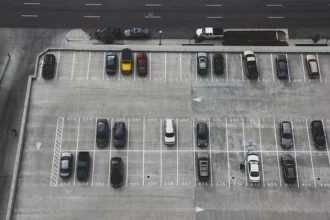Depending upon your career aspirations, you may currently be looking at studying to acquire a commercial driver’s license. However, sometimes people fail to realize that there are actually four different classes of commercial driver’s licenses: A, B, C, and D. Each aligns with specific transportation careers, meaning choosing from the four types of commercial driver’s licenses can have an impact on your job opportunities, earning potential, and job satisfaction. Learn everything you need to know in order to choose the right type for your career goals.
Understanding the Different Types of CDLs
For those who are unfamiliar with the different types of commercial driver’s licenses, there are four main categories of CDLs as mentioned: Class A, Class B, Class C, and Class D. The descriptions of each are as follows:
- Class A: This driver’s license is required to operate a combination of vehicles when the GCWR (gross combination weight rating) of the vehicle is 26,001 pounds or more and the vehicle being towed weighs 10,000 pounds or more.
- Class B: This driver’s license is required to operate a single vehicle with a GVWR (gross vehicle weight rating) of 26,001 pounds or more or any vehicle that is towing another vehicle that weighs more than 10,000 pounds.
- Class C: This driver’s license is required to operate single vehicles with a GVWR between 16,001 pounds and 26,001 pounds.
- Class D: This driver’s license is required to operate single vehicles with a GVWR of less than 16,001 pounds.
Everyday drivers have a Class C license, for the most part, but not a commercial Class C license which is the major distinction. Each different type of Class offers unique job opportunities as it allows you to drive specific vehicles.
Career Paths for Class A CDL Holders
Studying to acquire a Class A driver’s license typically opens the door to a variety of high-paying career opportunities within the trucking industry in particular. This license is required for operating large combination vehicles, such as tractor-trailers and semi-trucks, which makes long-haul trucking one of the most common career paths with this license.
Long-haul truckers transport goods across state lines and usually work for freight companies, logistic firms, or as their own independent owner-operators. Some other potential career options include working as a tanker truck driver where you haul liquid cargo like fuel or chemicals as well as a flatbed truck driver where you transport oversized loads that require specialized securing techniques. With additional endorsements added to your license, as a Class A CDL holder you can also go into specialized fields like hazmat transport or even double/triple trailer operations.
Career Paths for Class B CDL Holders
On the other side of things, those who hold a Class B commercial license are allowed to operate single, heavy vehicles. This makes it an ideal choice for those who have an interest in local or regional driving jobs. Many bus drivers, such as school bus drivers, city transit drivers, and charter bus drivers, hold a Class B license that contains a ‘Passenger’ endorsement.
This license class also qualifies drivers for jobs in delivery services like driving box trucks for retail and wholesale distributors. Furniture delivery companies and courier services also tend to employ those with a Class B license. Additionally, Class B holders can also work as construction vehicle operators by handling dump trucks, cement mixers, and utility trucks designed for infrastructure and development projects. These jobs often involve local or regional routes and typically appeal to those looking for stable and home-daily schedules.
Career Paths for Class C CDL Holders
A commercial Class C driver’s license isn’t too different from non-commercial Class C licenses in that the commercial version of this license simply allows a person to operate smaller commercial vehicles. These are usually designed for transporting passengers or hazardous materials. A common career path for a Class C holder is working as a shuttle or paratransit driver who transports elderly or disabled passengers in non-emergency vans.
Many chauffeurs and private shuttle drivers for hotels, airports, or corporate services also require a Class C CDL with a ‘Passenger’ designation. As mentioned, drivers who want to go down the hazardous transport path will need to study to receive a ‘Hazmat’ endorsement for their license. Class C license holders are typically seen as less versatile than A’s and B’s, but they offer opportunities in niche markets that provide steady work.
Career Paths for Class D CDL Holders
The Class D license is unique in that it is technically not a commercial driver’s license in the same way as an A, B, or C. This is considered a standard license in some states and is typically required to operate small commercial vehicles that don’t fall under the standard CDL definition. It is most often seen among taxi drivers, rideshare drivers, or small delivery van operators who transport goods for Amazon, FedEx, and other similar companies. Some states may qualify light-duty commercial vehicles like tow trucks or small box trucks under this classification, but it depends.
Make an informed decision to secure your career
Choosing the right CDL will all depend on your career goals, the preferred type of vehicle you want to drive, and the work environment you want to be in. A Class A CDL will offer the most flexibility and earning potential, but Class B’s cater to those who are looking for regional driving jobs with set hours. Class C’s, on the other hand, tend to serve niche markets such as passenger transport and delivery whereas Class D’s provide opportunities in smaller-scale commercial driving.
Regardless of the class of license you actually choose to pursue, don’t forget to also seek out the proper endorsements to enhance your job prospects and salary potential. With the right training and experience, CDL holders can find rewarding and stable careers in the transportation industry that align with their own unique lifestyle and professional aspirations.










